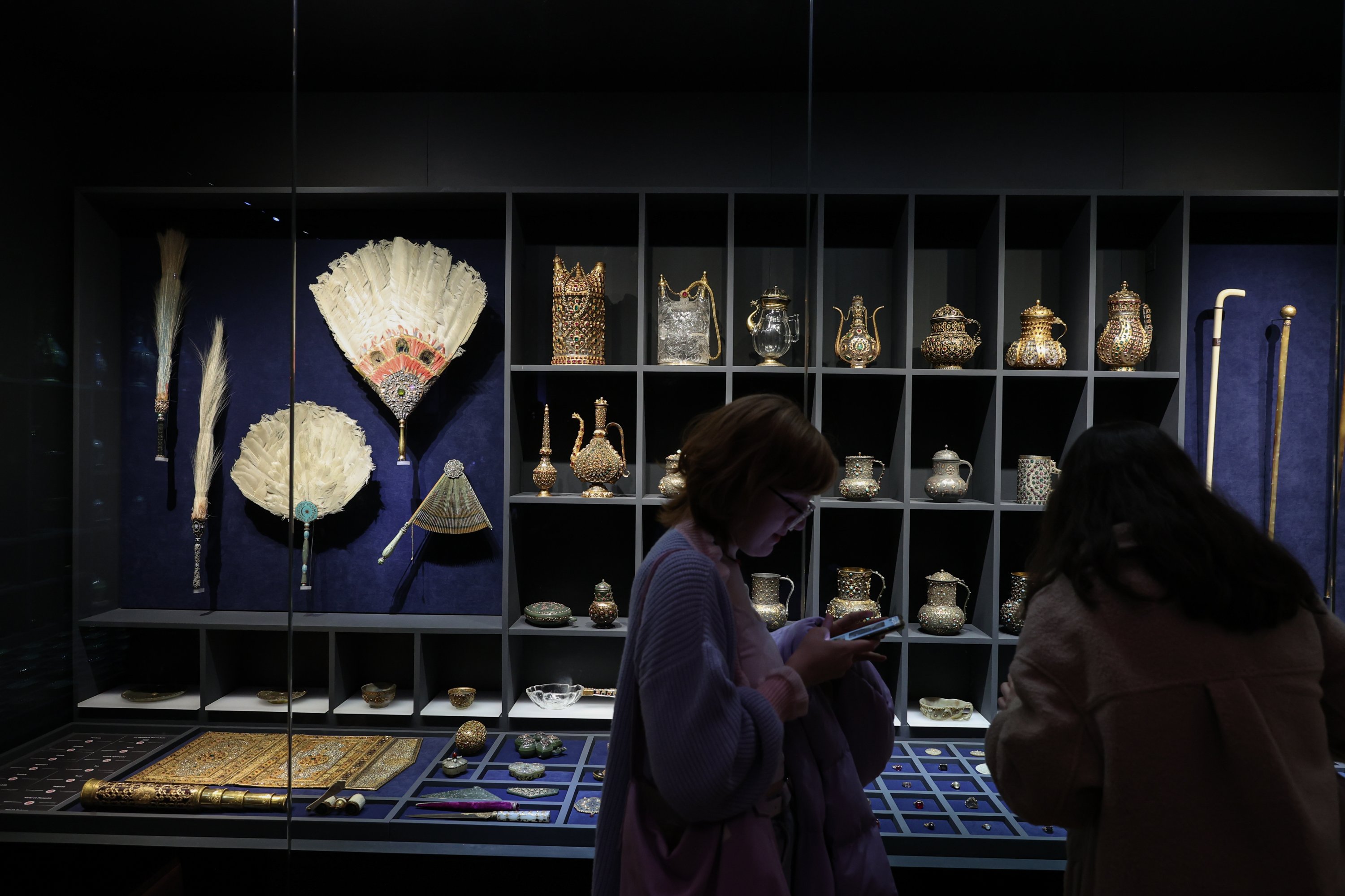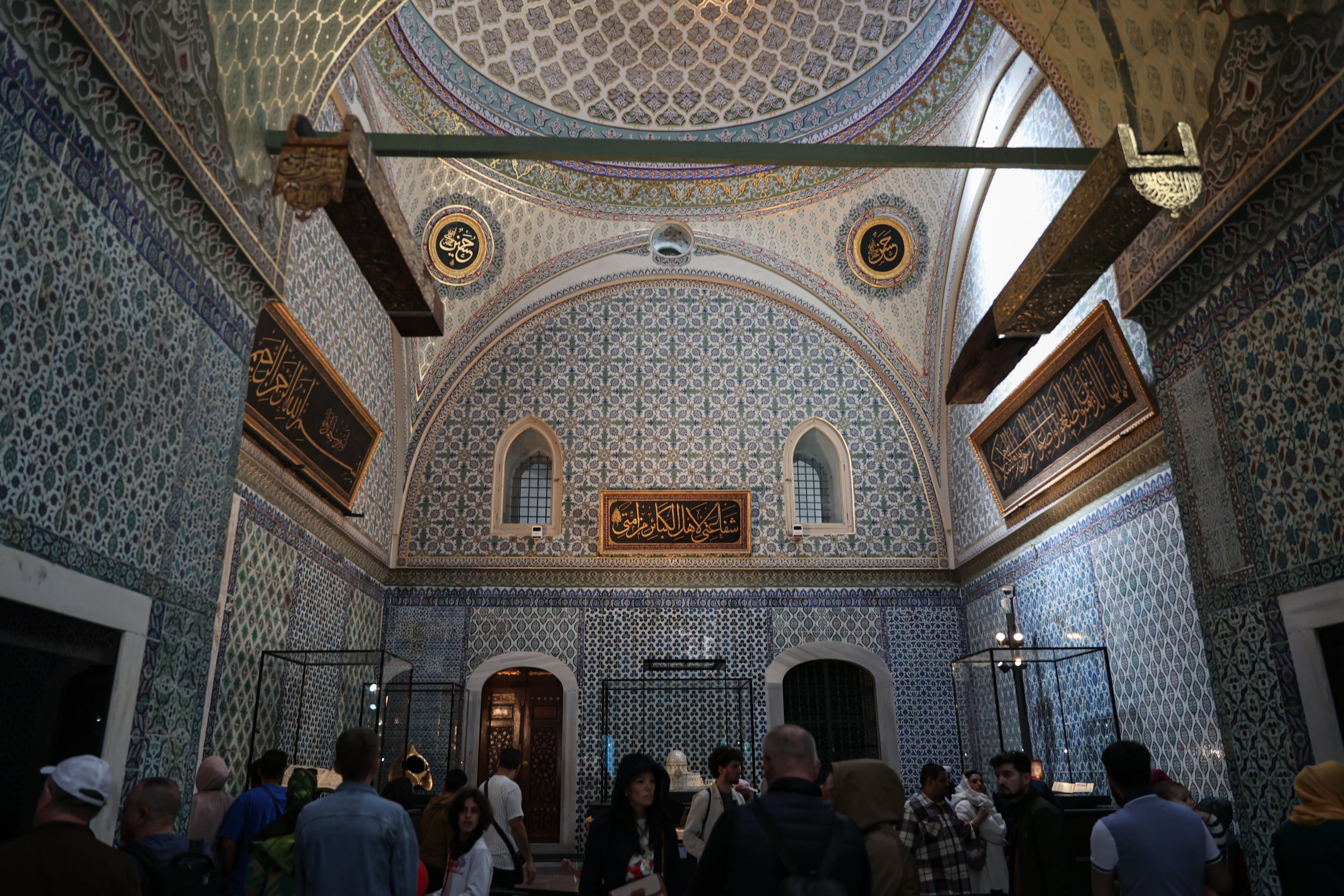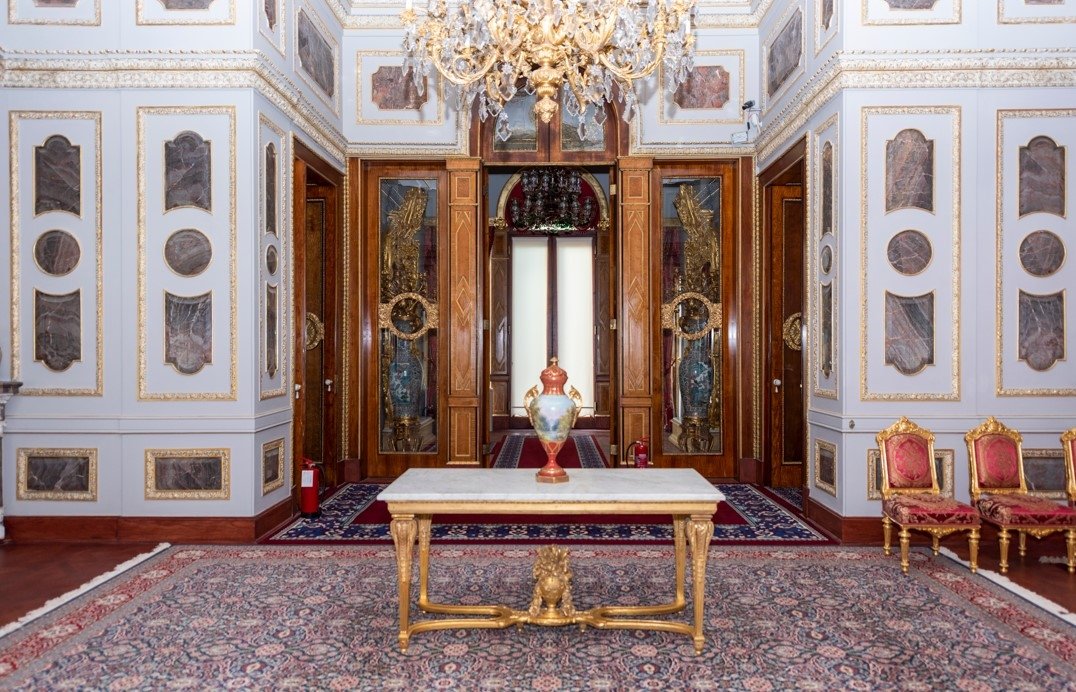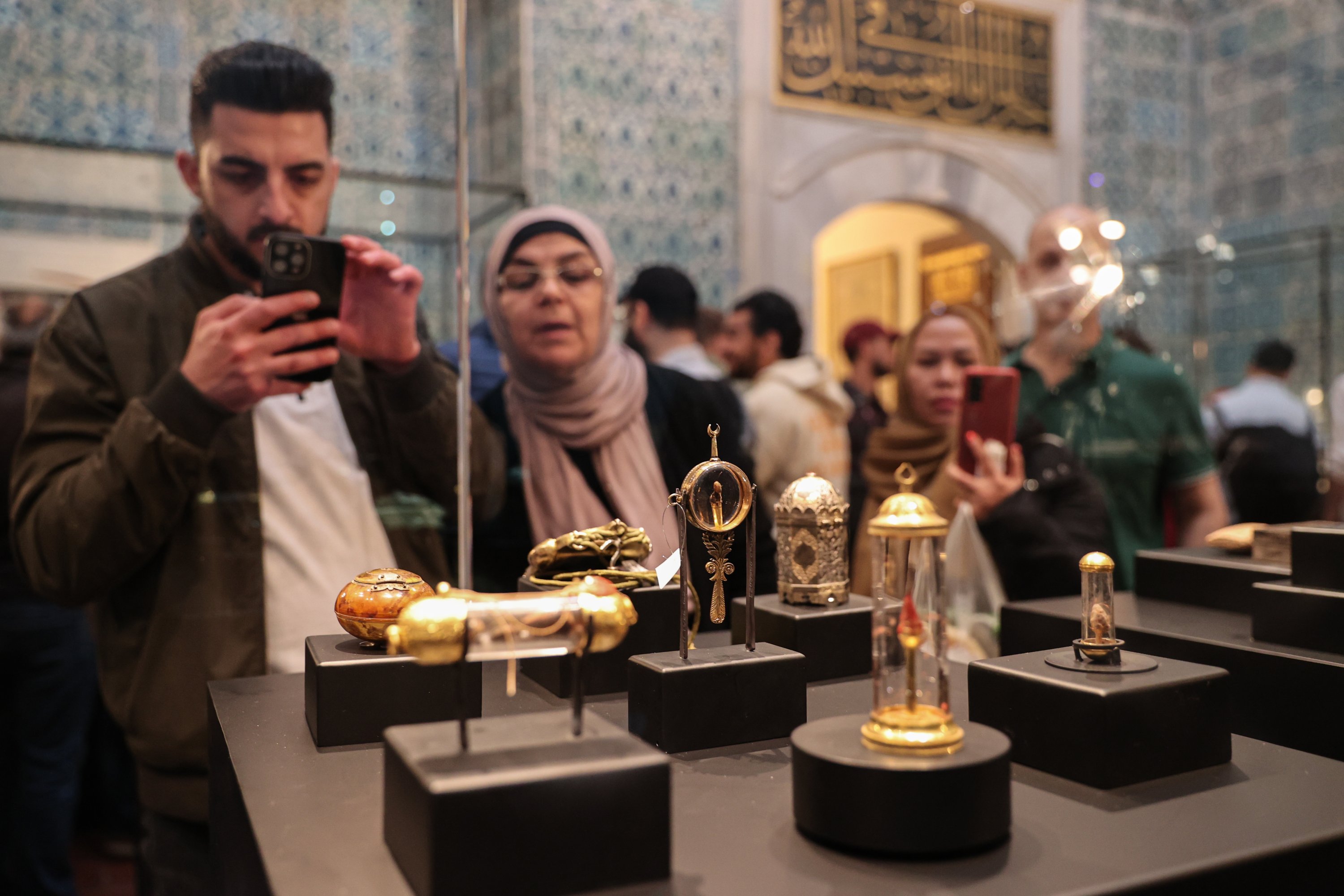© Turkuvaz Haberleşme ve Yayıncılık 2024
Local and international tourists alike have been eagerly visiting the Topkapı Palace during Ramadan Bayram, also known as Eid-al Fitr, since the completion of its restoration works.
The National Palaces have successfully reopened the Fatih Pavilion, a dormitory for the expeditionary force, and the Enderun Treasury, which were closed since 2014 to visitors. Additionally, after undergoing renovations, the Privy Chamber (today the Apartment of Holy Relics) has reopened, and the Mecidiye Mansion has welcomed visitors for the first time in 165 years. These significant improvements have added to the palace's impressive array of attractions and historical significance.
The involvement of international museum curators in the restoration of the palace buildings has been instrumental in creating concepts that successfully combine tradition with modernity, and in establishing exhibition arrangements that reflect this theme. Through their collaboration, the venues have undergone modernization that includes state-of-the-art security, air conditioning, display systems and equipment, ensuring the preservation and protection of the palace's invaluable cultural heritage for generations to come.
According to Yasin Yıldız, the president of the Directorate of National Palaces, the opening of these newly restored areas has expanded the visitable area of Topkapı Palace by an impressive 2,150 square meters (23,142.41 square feet). The restoration efforts also led to the discovery of a significant number of historical artifacts, adding to the already impressive collection of the palace. Prior to the restoration, visitors had access to 1,200 artifacts, but with the discovery of over 2,000 more during the restoration process, the total number has now reached 3,500.

The Topkapı Palace's Apartment of Holy Relics made history by granting access to visitors to view the Hırka-i Saadet (Mantle of the Prophet), a priceless collection of holy relics significant to the Islamic faith. For the first time, visitors had the opportunity to see the cardigan gifted by the Prophet Muhammad to Ka'b ibn Zuhayr, which is among the items kept in the Hırka-i Saadet.
Also, among the works exhibited for the first time in the apartment are Caliph Uthman's Quran, a part of the Kaaba pillar, the Kaaba's key, locks and addices, the silver-handled brush used for cleaning the holy relics, the dustpan, and the notebooks containing the lists of the holy relics kept during the Ottoman period.
After the opening of the new sections of the palace, the iconic landmark saw a surge of visitors with 60,000 people visiting in three days.

Constructed by Sultan Abdülmecid I in 1858, it was a resting place for sultans before religious and official ceremonies such as enthronement and destimal, a handkerchief or a cloth used by the Ottomans to kiss the cloak of Prophet Mohammed during ceremonies held in the sultan's Privy Room.
The mansion is also notable for its ornamental elements influenced by European art of the 19th century. The visitors can explore various historical artifacts at the mansion, such as the Prophet's letters. The Enderun Treasury also features 1,100 historical items, including the throne used in ceremonies, the Topkapı dagger and the Spoonmaker's Diamond.
The Fatih Mansion, previously known for structural issues like floor slipping and cracks, has now reopened after an extensive nine-year renovation. The renovation included the removal of 1,500 tons of concrete from the mansion's dome, stabilization of the ground and erection of a retaining wall around the mansion. In addition, 24/7 monitoring of seismic movements is being carried out through installed instrumental observation devices.
The mansion houses an impressive collection of 1,150 Ottoman treasury works, divided into four sections. The first section displays valuable items used by historical figures like Sultan Mehmed the Conqueror, Sultan Selim I, and Sultan Suleiman II, along with the highly prized Spoonmaker's Diamond.

The second section showcases ceremonial artifacts like the golden ceremonial throne, sultan's crest, armor and flask, and ceremonial weapons representing state ceremonies and symbols of the reign. The third section exhibits insignia and diplomatic gifts, including the Nadir Shah Throne that was sent to Sultan Mahmud I. Finally, the fourth section displays religious-themed works, emphasizing the sultan's caliph identity, such as the two solid gold candlesticks sent to the Prophet's grave.
The dormitory, which was originally responsible for washing the sultan's clothes during war or campaign, underwent a transformation during the Ottoman period and was transformed into a gallery, showcasing the fabric and clothing wealth of the dynasty. The gallery features 275 works, divided into lower and upper floors.
The lower floor of the gallery exhibits the clothes of the sultans from the period of Sultan Mehmet the Conquerer to Sultan Abdülmecid I. This includes ceremonial caftans and talismanic shirts, which are among the most striking works on display. These garments provide a glimpse into the opulence and grandeur of the Ottoman sultans, showcasing their elaborate clothing styles and luxurious fabrics.

The upper floor of the gallery showcases the clothes and accessories of the princes and lady sultans. Here, visitors can see the attire worn by the royal family members, including the princes and princesses of the Ottoman dynasty. This offers a unique insight into the fashion and dressing styles of Ottoman royalty.
The treasury department, where the inner treasury, jewelry guards and craftsmen were trained during the Ottoman period, was opened to visitors after nine years. The gallery displays 254 rare works selected from the National Palaces collection. A copy of the Quran, dating back to the third century according to the Hijri calendar, stands out among the works exhibited for the first time in the two-story gallery, which was arranged in accordance with the criteria of modern museology. The gallery also features distinguished works by famous calligraphers of the Ottoman Empire, and examples of these works have been transferred to the digital environment.
